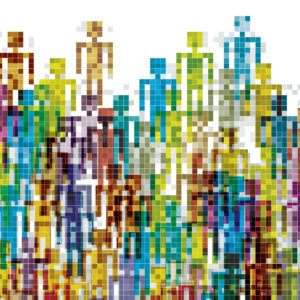Collaborate Smarter, Not Harder
Through analytics, companies can reduce overload, attrition, and other costs of collaboration — and increase its rewards.
Topics
No question, in a competitive global landscape, collaboration allows companies to serve exacting clients more seamlessly, respond more quickly to changing environments, and innovate more rapidly. But when an organization tries to boost collaboration by adopting a new formal structure, technology, or way of working, it often adds a steady stream of time- and energy-consuming interactions to an already relentless workload, diminishing instead of improving performance.
Think about the consequences at an individual level: It’s not unusual to feel as if we are just starting our work at 5 p.m., after the daily battery of demands has finally quieted down. Thanks to the plethora of technologies that keep us connected, increasingly integrated global operations, and the need for a multidisciplinary approach to deploying complex products and services, the problem has snowballed over the past decade, with collaborative time demands rising more than 50%. Most knowledge workers and leaders spend 85% or more of their time on email, in meetings, and on the phone.1 Employees struggle with increases in email volume, the proliferation of new collaborative tools, and expectations of fast replies to messages — with deleterious effects on their quality of work and efficiency. Research tells us that simple distractions like checking a text message fragment our attention more than we realize, and more consuming distractions — such as answering an email — can cost us more than 20 minutes to fully regain our focus.2
Even though employees are acutely aware that they’re suffering, most organizations don’t recognize what’s happening in the aggregate. “We can track an airline receipt down to two decimal places and create a whole infrastructure around compliance, but we have no idea how effective networks are or where collaborative time is being spent,” lamented the CIO of one company we studied. With increasing pressure on organizations to become more agile, there is also a greater tendency to swamp employees with collaboration demands in pursuit of a networked organization. We have found that people have, on average, at least nine different technologies to manage their interactions with work groups. The result can be overwhelmed and unproductive employees, sapped creativity, and employee attrition.
Fortunately, it is possible to improve collaboration efforts with the help of analytics.
References
*Order of authorship is alphabetical, as this was a fully collaborative effort (although without analytics).
1. R. Cross, S. Taylor, and D. Zehner, “Collaboration Without Burnout,” Harvard Business Review 96, no. 4 (July-August 2018): 134-137; and R. Cross, R. Rebele, and A. Grant, “Collaborative Overload,” Harvard Business Review 94, no. 1 (January-February 2016): 74-79.
2. R. Friedman, “The Cost of Continuously Checking Email,” July 4, 2014, https://hbr.org.
3. M. Lewis, “The No-Stats All-Star,” The New York Times, Feb. 13, 2009.
4. B. Schoenfeld, “How Data (and Some Breathtaking Soccer) Brought Liverpool to the Cusp of Glory,” The New York Times, May 22, 2019.
5. Others have approached this field more technically, by focusing on the metrics themselves. For instance, see P. Leonardi and N. Contractor, “Better People Analytics,” Harvard Business Review 96, no. 6 (November-December 2018): 70-81. Our focus is on the problems that collaboration analytics can solve, in hopes of inspiring action among leaders who need to understand more viscerally what impacts are possible before diving into the methods and metrics.
6. J.W. Boudreau and P.M. Ramstad, “Where’s Your Pivotal Talent?” Harvard Business Review 83, no. 4 (April 2005): 23-24.
7. M. Mortensen and H.K. Gardner, “The Overcommitted Organization,” Harvard Business Review 95, no. 5 (September-October 2017): 58-65.
8. M.J. Arena, Adaptive Space: How GM and Other Companies Are Positively Disrupting Themselves and Transforming Into Agile Organizations (New York: McGraw-Hill, 2018).
9. R. Cross and P. Gray, “Where Has the Time Gone? Addressing Collaboration Overload in a Networked Economy,” California Management Review 56, no. 1 (fall 2013): 50-66.
10. G. Ballinger, E. Craig, R. Cross, et al., “A Stitch in Time Saves Nine: Leveraging Networks to Reduce the Costs of Turnover,” California Management Review 53, no. 4 (summer 2011): 111-133.
11. R. Cross and R.J. Thomas, “Managing Yourself: A Smarter Way to Network,” Harvard Business Review 89, nos. 7-8 (July-August 2011): 149-155.
12. J.L. Whittington, S. Meskelis, E.K. Asare, et al., Enhancing Employee Engagement: An Evidence-Based Approach (New York: Palgrave Macmillan, 2017).

